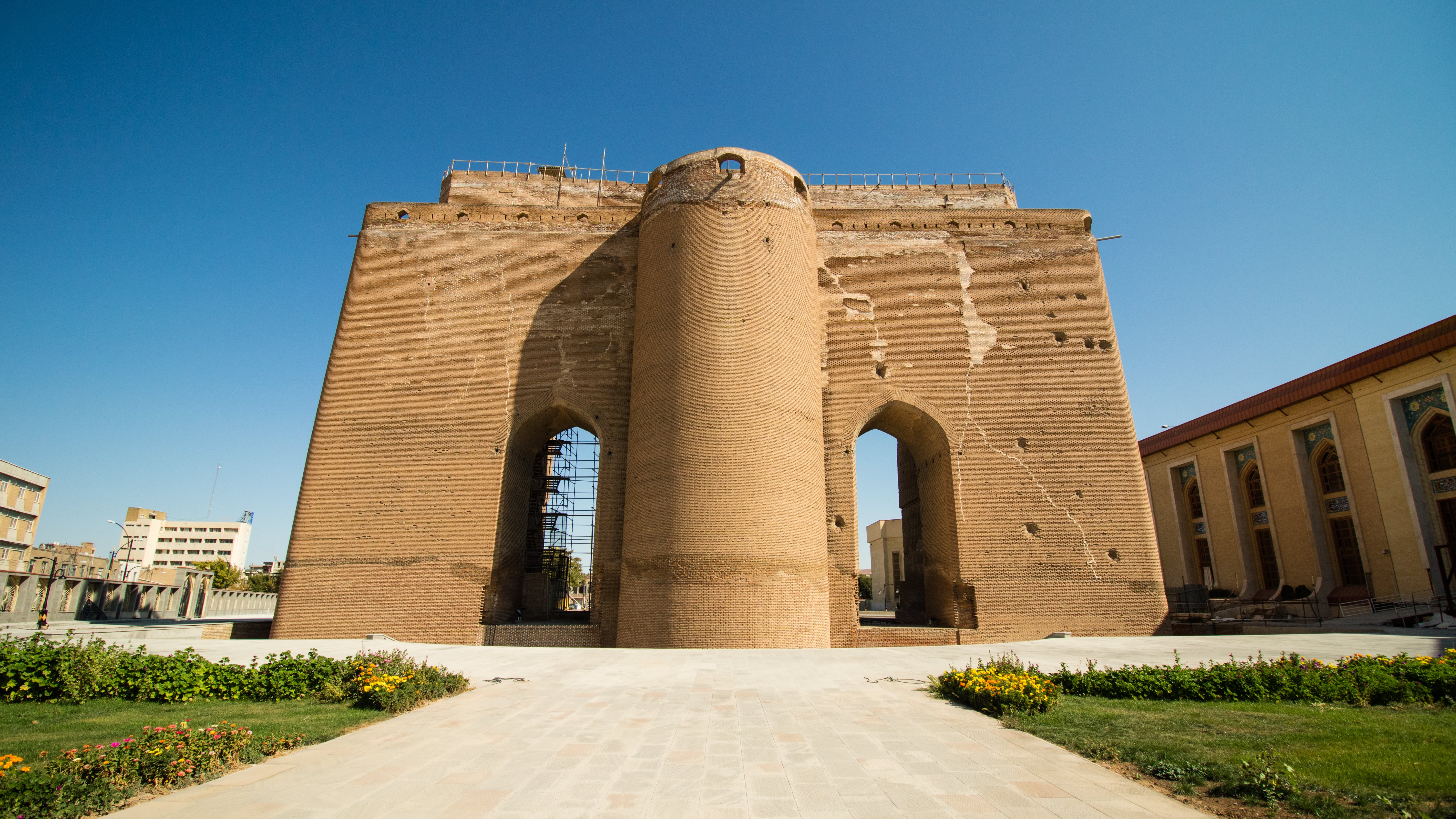
Tabriz
Tabriz, Persian Tauris, fourth largest city of Iran and capital city of East Azerbaijan Province, in northwestern Iran lying in a height of around 1370 meters above sea level. City built in a valley surrounded by hills from three sides, here climate is continental which means hot and dry in summers and sever cold during winters. Tabriz Bazaar, once a major Silk Road market, is a sprawling brick-vaulted complex selling carpets, spices and jewelry. Citadel also called Ark remarkable for its simplicity, size and the excellent condition of its brickwork. Or rebuilt 15th century Blue Mosque which retains original turquoise mosaics on its entrance arch.
Tabriz throughout the years was both strategically and politically important city. Its name originated from tap-riz (“causing heat to flow”), as there were many many thermal springs in the area. Also, at some point it was called Gazaca and during those years Tabriz was the capital of Atropatene, named for Atropates, one of Alexander the Great’s generals.
Earthquakes are quite common in city’s area. During its existence city was rebuilt in 791 after being destroyed. Then similar disasters followed in 858, 1041, 1721, 1780, and 1927. Not only earthquakes but wars shacked Tabriz, it was once occupied by Mongols, then by Turkic conquerors who actually built one of the must-see mosques in the city – The Blue Mosque. After shifting in between Turks and Iranians Tabriz was occupied by Russians in 1826. Also, during World War I, Turkish and then Soviet troops temporarily occupied Tabrīz. The city was again occupied in World War II, this time by Allied troops protecting military supply routes running through Iran and into the Soviet Union. Though all parties had agreed to withdraw after the war, the Soviet Union increased its presence and helped a separatist movement establish an autonomous region in Azerbaijan, with Tabrīz as its capital. Iran and the Soviet Union reached an agreement in March 1946 that called for the withdrawal of Soviet troops in exchange for the creation of a joint-stock oil company.
Modernizing Tabriz was the challenge from after the second World War. The infrastructure developed, streets widened, buildings erected, and public gardens laid out with fountains and pools. Tabriz is commercially important city and the principal products include carpets, textiles, cement, agricultural machinery, motorcycles, and household appliances. The city is linked by rail with Tehran, as well as, connected with areas to the north and on top of that it has an airport.
Helpful tips
Markets. In Tabriz as in every other location on the world enjoyed by tourists you will have a chance to buy overpriced souvenirs. However, prices in grocery shops are similar as in all country.
Be sure to visit the Bazaar which is in the center of the city. Lively and full of amazing things for everyone to choose from.
Transportation. To get to Tabriz you can use car, bus, train or plane which ever you think is more convenient for you. We hitchhiked and it was super easy as it is quite a big city attracting a lot of people who travels to or through it.
To get around the city is best on foot also using a metro or with a motorbike, sometimes taxi might be a quick option as well. However, traffic is intense so for us it was best to do it on foot!
Best of luck planning your holidays in Iran!
Is there anything else you would like to visit while in Iran?
If you have anything in mind, please let us know and let’s discuss it.
For more traveling tips subscribe to our newsletter!